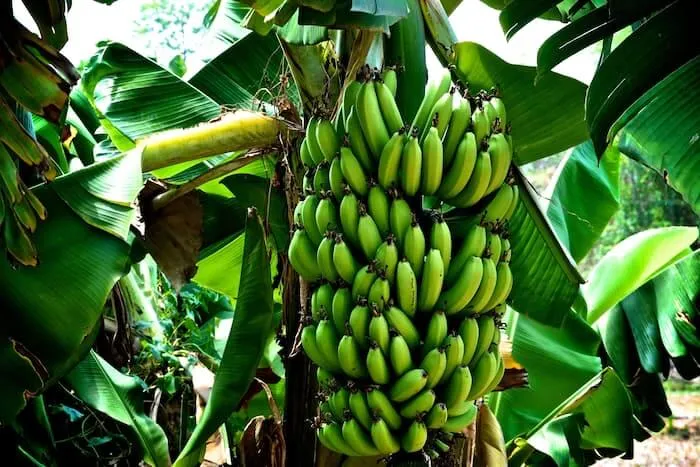Banana farming is a thriving agricultural sector in Nigeria, contributing significantly to the nation’s economy. With its rich soil and favorable climate, Nigeria stands as one of the top banana-producing countries in Africa. But what does it take to start and manage a successful banana farm in Nigeria? This article will guide you through everything you need to know, from the history and varieties of bananas to the technical aspects of farming and marketing strategies.
History of Banana Farming in Nigeria
Bananas have been cultivated in Nigeria for centuries, dating back to the time when they were first introduced by Portuguese explorers. Over the years, banana farming has evolved from small-scale backyard gardens to large commercial plantations. Today, bananas are not only a staple food but also a major cash crop for many Nigerian farmers.
Varieties of Bananas Grown in Nigeria
In Nigeria, several varieties of bananas are cultivated, each with its unique characteristics. The most common types include:
- Cavendish Bananas: Popular for their sweet taste and commercial value.
- Red Bananas: Known for their reddish skin and distinctive flavor.
- Plantains: Though technically a different species, plantains are often grown alongside bananas and are a staple in Nigerian cuisine.
Farmers prefer these varieties due to their adaptability to the local climate and soil conditions.
Climate and Soil Requirements
Bananas thrive in warm, tropical climates with temperatures ranging between 26°C and 30°C. They require a well-distributed annual rainfall of about 1,200 mm to 2,500 mm. The ideal soil for banana farming is deep, well-drained, and rich in organic matter. Sandy loam soils with a pH of 5.5 to 7.0 are particularly suitable for banana cultivation.
Land Preparation
Proper land preparation is crucial for the success of banana farming. This involves clearing the land of weeds, debris, and previous crops. Tilling the soil helps to improve aeration and water infiltration. Additionally, it’s essential to enhance soil fertility by incorporating organic matter such as compost or manure.
Planting Process
Selecting healthy suckers is the first step in planting bananas. Suckers should be disease-free and have well-developed roots. Planting holes should be dug at a spacing of 2.5 to 3 meters apart, ensuring enough room for the banana plants to grow. The holes should be about 60 cm deep and 60 cm wide, with a mixture of topsoil and organic matter added before planting.
Irrigation and Water Management
Bananas require consistent moisture for optimal growth. In regions with insufficient rainfall, irrigation is necessary. Drip irrigation is an efficient method that delivers water directly to the plant roots, reducing water wastage and ensuring the plants receive adequate moisture.
Fertilization and Nutrient Management
Banana plants are heavy feeders and require a balanced supply of nutrients. Essential nutrients include nitrogen, phosphorus, and potassium. A recommended fertilization schedule involves applying organic manure during planting and supplementing with chemical fertilizers such as NPK (15:15:15) every three months.
Pest and Disease Management
Bananas are susceptible to various pests and diseases. Common pests include banana weevils, aphids, and nematodes, while diseases such as Panama disease and banana bunchy top virus can significantly impact yields. Integrated pest management (IPM) practices, including the use of resistant varieties and proper sanitation, are effective in controlling these issues.
Weed Management
Weeds compete with banana plants for nutrients and water, thus affecting growth. Regular weeding is essential, and mulching can help suppress weed growth. Organic mulches like straw and grass clippings also improve soil moisture retention and fertility.
Harvesting Techniques
Bananas typically take about 9 to 12 months to mature. Harvesting should be done when the fruits are fully grown but still green. Signs of maturity include the rounding of fruit edges and a change in color from dark green to light green. Cut the banana bunches carefully to avoid damage.
Post-Harvest Handling
After harvesting, bananas should be cleaned and sorted based on size and quality. Proper handling during storage and transportation is crucial to prevent bruising and spoilage. Bananas should be stored in a cool, well-ventilated area to extend their shelf life.
Marketing and Distribution
Marketing bananas involves both local and international markets. Farmers can sell their produce at local markets, supermarkets, or export them to other countries. Understanding market demand and pricing strategies is essential for maximizing profits. Joining cooperatives or farmers’ associations can also provide better access to markets and resources.
Challenges in Banana Farming
Despite its profitability, banana farming in Nigeria faces several challenges, including:
- Pest and Disease Infestations: Persistent issues that require constant monitoring and control.
- Climate Change: Unpredictable weather patterns affecting crop yields.
- Lack of Access to Credit: Financial constraints limiting the ability to invest in improved farming techniques.
Future Prospects of Banana Farming in Nigeria
The future of banana farming in Nigeria looks promising, with increasing demand both locally and internationally. Government initiatives and support for agriculture are expected to boost production. Innovations in farming practices, such as tissue culture propagation and improved pest management techniques, are set to enhance yields and profitability.
Banana farming in Nigeria is a lucrative venture with significant economic potential. By understanding the critical aspects of banana cultivation, from land preparation to marketing, farmers can achieve high yields and profitability. With the right support and investment, the banana farming sector in Nigeria is poised for remarkable growth.

I need to work banana farrming